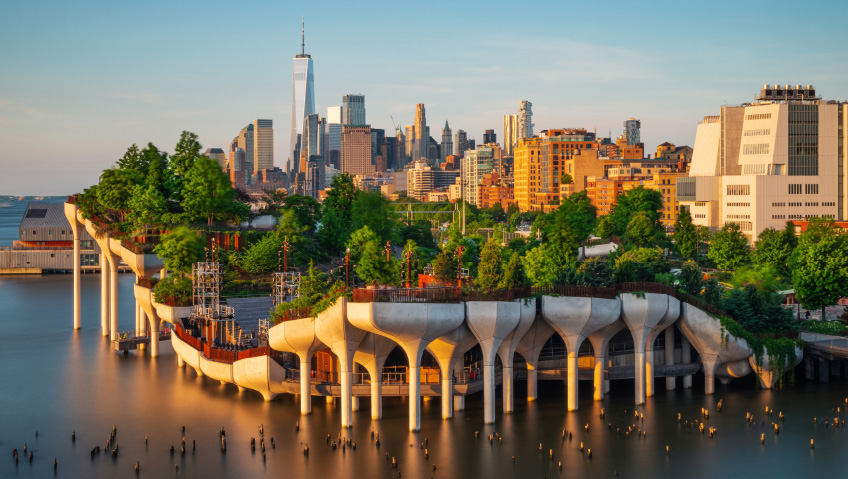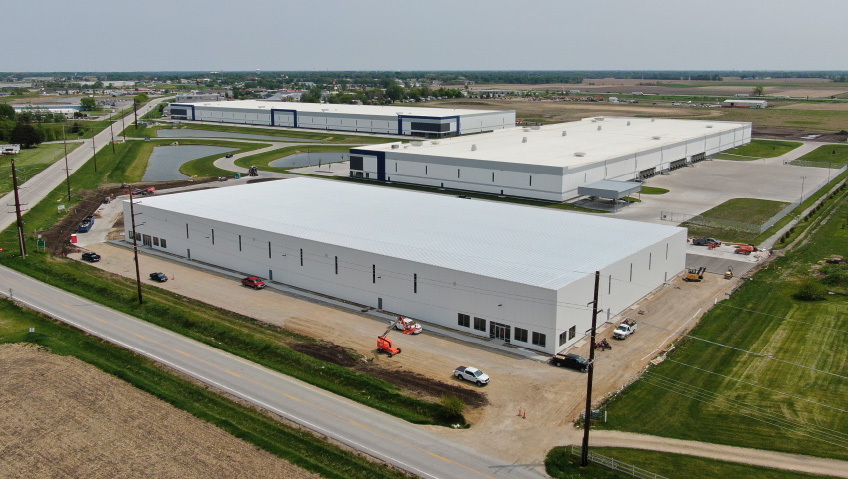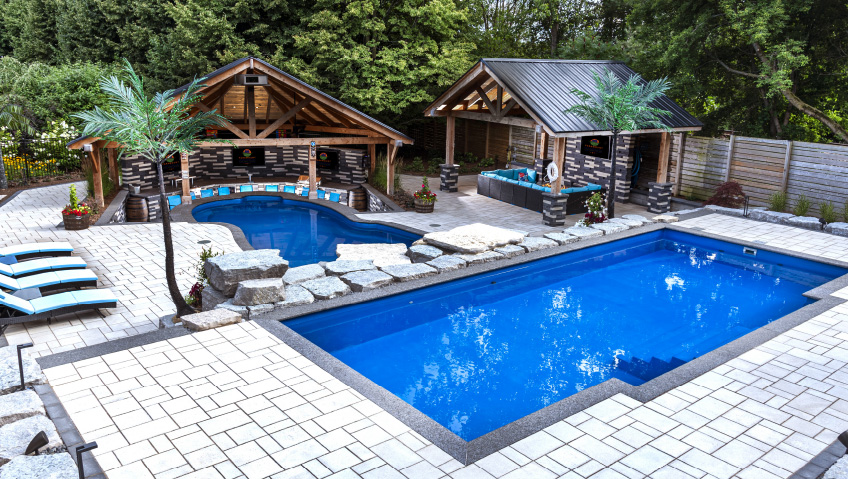The tussle between man and the ocean over soil is by no means a new phenomenon, with some of the earliest feats of coastal engineering dating as far back as 8000 years to India’s Indus Valley Harappa civilization, and the even older ancient jetties built at Dwarka in Gujarati, India. It is likely that there are similar efforts that date back even further, according to the findings of academics like Nilesh Nilkanth Oak, studying ancient texts related to the area. While more ancient harbor sites are found in Egypt, the Middle East, Turkey, and beyond, evidence for the human engineering of shorelines—to feed ourselves and protect our settlements from natural forces—has roots in lands as diverse as ancient Frisia, China, and what is now known as Greece.
While those early engineering concerns were perhaps more related to taming nature than protecting it, the more recent wholesale destruction of natural coastal ecosystems in countries around the world, where the financial aspects of land development potential and other economic drivers has often outweighed the future impact of such decisions, now leaves modern humans with a different challenge: the loss of land and the ensuing impact on communities. Looking at the United States alone, it is clear that action is needed.
At a time in human history when calculating the return on investment of protecting nature appears to be the latest free market trend (as if choosing between economy and ecology is an actual choice) unbridled population and industrial growth are speeding the deterioration of natural ecosystems. In some cases, that includes ecologies that hold the very soil beneath us in place. As the etymology of the root of both ecology and economy, oikos refers to any unit of land that is also a home—that includes buildings and all the humans connected to them. Within this context of the original meaning of economy, getting to the root of our challenge most likely means tidying up how we as a human family do our housekeeping.
According to estimates provided by the United States Climate Resilience Toolkit, courtesy of the Obama administration and made possible by the National Oceanic and Atmospheric Administration (NOAA) in collaboration with other federal agencies, the country pays around $150 million annually to help save beaches and protect shorelines from losing land mass. Moreover, the loss of coastal wetlands seems to be racing ahead, with losses amounting to around 80,000 acres per year. To help bring this image home, that equates turn-of-the-century losses to an area exceeding that of Rhode Island in just over a decade. Furthermore, its estimation of the monetary value of lost land due to shoreline destruction at the time of publication of this information was $500 million annually. In Africa, the loss of habitable land due to insufficient planning is reaping unwanted results, with displacement of human settlements and other adverse outcomes seriously affecting the social and economic welfare of communities.
The good news is that experts are working tirelessly to improve the situation globally, combining and applying their deep knowledge of a range of subjects to help salvage what can be saved. In the process, engineers and environmental specialists learned that creating “hard solutions” using concrete construction as the only flood and erosion control measures should be reserved as an extreme option, best avoided when possible. That is because hard construction often causes further damage due to sediment displacement following dispersed current energies causing beach erosion; interference with natural water courses; and the high cost of installation and maintenance.
As a result, experts stress the importance of combining such hard structures—where unavoidable—with the planting of effective vegetation like tidal marshes or plant-based options like coconut fiber rolls (coir logs), to create long-term, effective solutions. One of the positive outcomes of these findings is that mangroves are now back in the limelight after being considered economically worthless during the first half of the previous century. This time they feature as our true shoreline heroes, deserving protection as a top “soft solution” to coastal erosion.
Noted as being “the most carbon-rich ecosystems in the world” in an academic review by Choudhary, Dhar, and Pawase, the health and abundance of these complex systems are pivotal in climate management. Yet, according to conservation.org, over 60 percent of the planet’s mangroves have already been destroyed, alongside significant percentages of seagrass meadows and salt marshes—all life-giving carbon basins, storing what is referred to as blue carbon, without which some of the earth’s most valuable ecosystems are collapsing.
Mangroves flourish in high-saline waters and anoxic (oxygen-poor) soil that is regularly waterlogged, growing across 118 countries between 5°N and 5°S latitude in brackish water and intertidal zones of tropical and subtropical coastal areas. “Mangroves are evolutionary marvels. They’re a critical part of most tropical, oceanic ecosystems,” Mark Huxham, an environmental biologist, told The Economist in a documentary on how scientists are saving a crucial mangrove forest in Gazi Bay, Kenya.
Mangroves have long been understood by aquatic botanists to play a crucial role in providing precious intertidal habitats that often act as nurseries for land and sea creatures, and oceanographers from around the world are tirelessly championing their cause. One such academic, Iyes Rahmani-Meraits, coastal and marine environment strategist, oceanographer, and subsea engineering expert, is passionate about raising awareness around the subject. “We need marine and coastal engineers and environmental engineers to protect [and restore] mangroves. It’s not only about protection; it’s also about how to include mangroves in planning when constructing,” he says.
“I can’t plan something, construct a hotel or something, without including mangroves’ environmental processes,” he continues. “This is the main difference between marine and coastal engineering and environmental engineering.” In his opinion, it would be good for universities to develop curricula that bring coastal/marine and environmental engineering together with an additional focus on the intertidal ecosystems.
As the possibility of establishing mangroves away from their original tropical and subtropical locations needs more research, the main focus of professionals in the field is to restore the damage done to existing swamps. Pointing out that habitat—rather than blue carbon—is their most priceless gift to the planet, Rahmani-Meraits is clear on the tremendous value that mangroves provide in terms of the fragile ecosystems they support. “The most important thing [about] mangroves is the habitat [they provide.] Some universities in the world focus their studies on blue carbon,” he says. Beyond the species such mangroves house, however, they also prevent erosion of coastlines caused by powerful weather events and ocean currents.
“With marine and coastal protection, we don’t need to be en vogue, or more concerned about what gets more [attention] at conferences. As a researcher, my target is classifying [issues] by importance,” he says.
As an environmental scientist working on the construction side of the field as partner and division manager for the visionary firm, Nelson Pope Voorhis, Brant Reiner is well-versed in the quandaries presented by such shoreline improvements. In his line of work around Long Island, New York, the issue of shoreline reclamation often involves properties that were built too close to the sea—in some cases as long ago as a century. Here, prolonged erosion typically results in bluffs that come under threat of being reclaimed by nature over time. In such cases, the ultimate choice is between protecting such properties or retreating.
As the latter is rarely possible in the case of older properties, protection and therefore “hard solutions” often remain the only option. To avoid such situations in modern construction, Reiner’s advice is to think ahead as far as possible. “Rising sea levels should be among the most important topics for people living close to coastal areas. We’re seeing it on projects from municipal levels through the private sector, dealing with it in multiple different ways,” he says, pointing out that, within the context of his profession, choosing a route to shoreline stabilization is dictated by the unique coastal system at hand and other circumstances.
When dealing with hard solutions, marine-sensitive materials protect the ocean and speed the repopulation of sea creatures and biodiversity while also supporting soft solutions through the establishment of erosion buffers like mussel beds, oyster banks, and the like. Considering that a decade ago, science.org reported 14 percent of the United States’ coastline to be reinforced with concrete, amounting to nearly 23,000 km back then, a more ecologically sensitive material was desperately needed. “Somewhere in the middle is where I tend to see most of the effectiveness of bridging [the gap between hard and soft solutions],” Reiner says. Living shorelines is where his true passion resides.
Far from being a mere romantic notion, living shorelines perform a crucial function in protecting coasts and property through their capacity to absorb the energies emitted by ocean currents, harboring high levels of biodiversity while protecting beaches from sediment displacement. While this is not always possible due to landscape or property challenges, to Reiner, it is the golden compromise one often seeks in such situations. Such solutions can comprise grey solutions like low-sill bulkhead-type structures holding a marsh across the intertidal zone. Moreover, considering surrounding aquatic life and supporting it while installing living buffering structures is paramount to the long-term success of such initiatives.
“The overall theme is [whether we can] provide a solution that has a long-term benefit and is adaptable to future potential influences from climate change, rising sea levels, and nature’s response to such remedies,” Reiner adds. While the conversation over hard versus soft solutions continues, what is amply clear is that more research and specialized education should be prioritized in marine spatial planning (MSP), including coastal protection.






